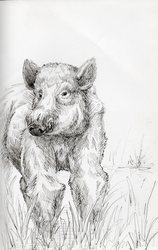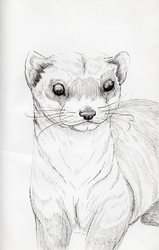Sign In
CloseTotem of the day is Swan! Accept and surrender to what is happening around you, knowing that the world's energy will come together and work out. Clarity will shine through the confusion surrounding you so focus on the gift and love of life while showing appreciation and love to those around you. Do what you need to in order to balance yourself and bond even stronger with the Spirits of the world. You may need to let others know what you are thinking, just be sure to keep it clear and honest. Add a bit of music and singing to your lifestyle with a study of Tai Chi or yoga. You may need to take some time in silent meditation, instead, with an emphasis on being quiet and listening without talking. The Swan totem is known for it's connection to grace, romance, love, and intuition. When Swan shows up, it can often mean that it is time to look at your relationships in life. See if you have the proper balance and work towards gaining that balance through grace and purifying yourself. The Swan can help teach us to find balance not only in our relationships, but also finding balance between the different aspects of ourselves. The Hindus referred to the grace of the swan in the Saundarya Lahari text as the Hamsa bird where two swans spend their lives within the depths of the divine mind, swimming constantly while living on the knowledge that came from the lotus flower. While the Celtic traditions saw Swans as signs of movement such as those in the heart and mood. The Celts connected them with female energies, yet also saw them as solar animals which bound them to what is generall masculine energy. This connection to both male and female energies meant they were viewed as binary and symbols of grace and balance. People who connect with Swan are skillful at going with the flow of life, able to shape and adapt gracefully. These individuals are calm, graceful, and powerful with a strong sense of protectiveness over those that they love. They are highly intuitive, spiritually and physically powerful, and sometimes gifted with clairvoyance. At times, they can become aggressively protective, but often retain a sense of dignity and calm.
Swans, Cygnus Atratus, are omnivorous birds that can live up to 12 years in the wild. These large birds are highly aquatic and live throughout regions of both Northern and Southern hemisphere. Swans are most closely related to geeze and ducks, but are generally larger. An adult swan can reach up to 60 inches in length with a wingspan of around 11 feet from tip to tip and a weight of approximately 33 lbs. There are approximately 6 species of Swan: the Black Swan, Black-necked Swan, Whooper Swan, Trumpeter Swan, Mute Swan, and Tundra Swan. The Tundra swan also has two subspecies called the Whistling swan and Bewick's swan. These birds prefer temperate habitats with a large source of water such as shallow wetlands. The Black-necked swan can be found in South America and the Mute Swan being found in Europe in lower latitudes. The small Tundra swan occurs in northern tundras of North America, the Black swan living in Australia and introducted into New Zealand, and the Whooper swan being found in Iceland and subarctic Europe and Asia. Swans are migratory birds, the Whooper swan known to move to temperate Europe and Asia in the winter. The Trumpeter Swan is the largest North American swan. All swans are incredibly powerful with strong wings and few natural predators. Most swans are a brilliant white color with an orange beak, however, the southern swans tend to be a bit of white and black with orange, black, or red beaks. Although graceful, they are also known for their aggressive behaviors and fierce protectiveness. Highly aquatic, swans are almost always found on or near water. They have a streamlined body adapted for this life on water and webbed feet that enable them to swim easily. However, their wings are so heavy that, while they can fly, they only fly for short distances unless migrating. The australian Black Swan is known to swim with one webbed leg while the other is kept tucked above it's tail in order to help them change direction easily. The diet of a Swan consists of underwater vegetation such as aquatic plants and seaweed as well as berries, seeds, and plants from on land. Now and then, they will feed on small fish or insects. In order to eat while in the water, they will duck down into it with their long necks in a behavior known as dabbling or up-ending. Swans do not mate for life, but are known to establish very strong mate bonds that can last quite a few years. These mated pairs will build a nest out of twigs and leaves together. The female will lay between 3 and 9 eggs and are the only birds in the family Anatidae where both male and female bird will help to incubate the eggs. These eggs will hatch after approximately a month into baby swans called cygnets. These cygnets will be able to swim alongside their mother within only a few days. They stay close to their protective mother for her protection and warmth. The babies will stay so close to their mother at times that swans, and other birds such as ducks, will let their babies sit on their backs underneath of their wings while swimming or feeding. This allows them to keep track of their young and protect them without leaving them on shore while they feet. It also allows them to keep their babies with them even when the young become to tired to swim alongside them. Both Black-necked swan mother and father will help to carry the cygnets.
Submission Information
- Views:
- 414
- Comments:
- 0
- Favorites:
- 1
- Rating:
- General
- Category:
- Visual / Traditional




